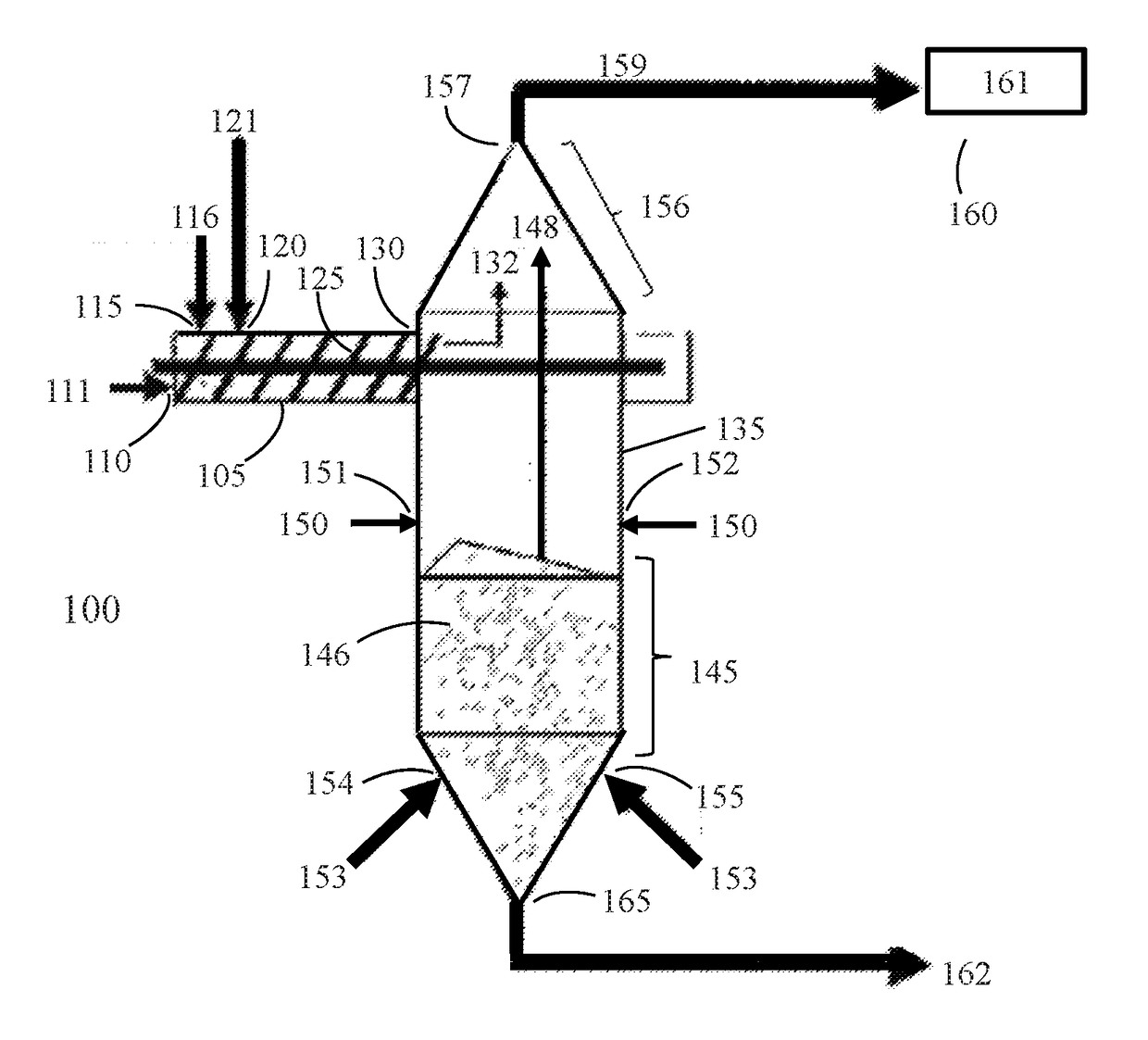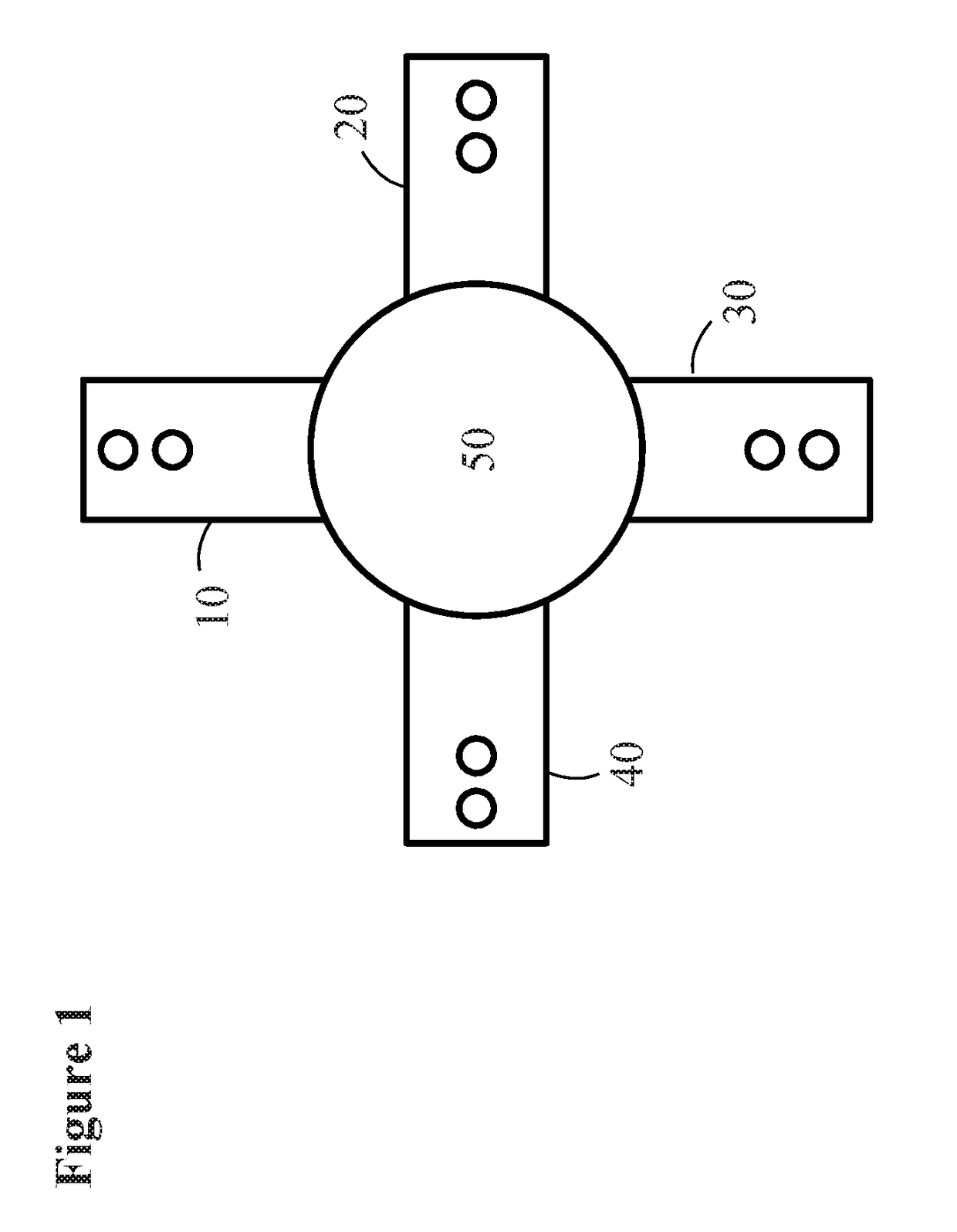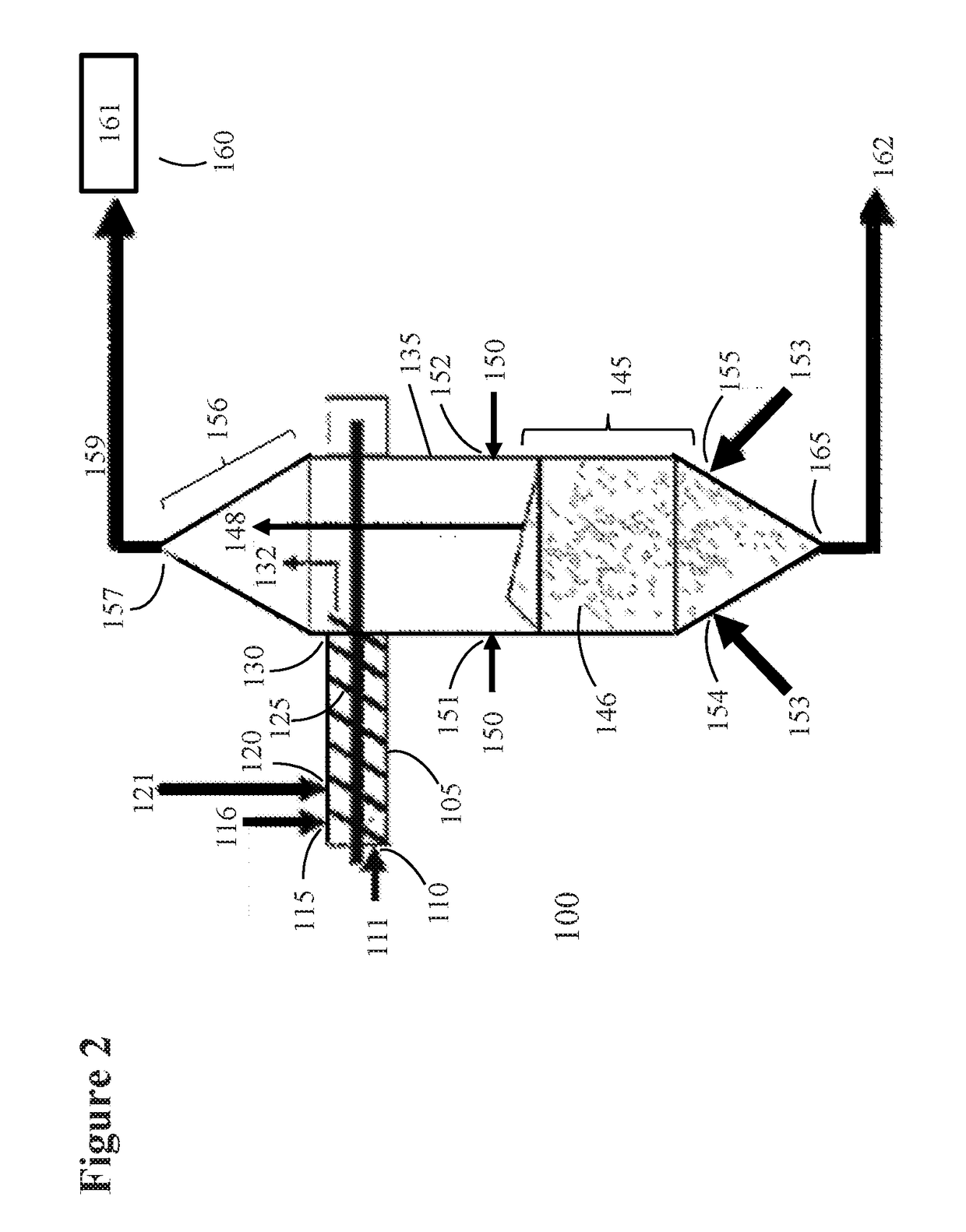Two-stage biomass pyrolysis
a biomass pyrolysis and two-stage technology, applied in the direction of biofuels, mechanical conveying coke ovens, horizontal chamber coke ovens, etc., can solve the problems of lowering efficiency and yield below commercially-viable levels, neither option is conducive to the design of a large, commercial-scale pyrolysis system, etc., to facilitate the pyrolysis of un-pyrolyzed biomass and facilitate the upgrading of the second condensable.
- Summary
- Abstract
- Description
- Claims
- Application Information
AI Technical Summary
Benefits of technology
Problems solved by technology
Method used
Image
Examples
Embodiment Construction
[0021]The inventive processes disclosed below partly relate to processes and systems for pyrolyzing a lignocellulosic biomass feedstock in a pyrolysis reactor comprising two reactor stages. The inventive processes and systems provide multiple pyrolysis residence times for more efficient pyrolysis of the different molecular components within a lignocellulosic feedstock. In certain embodiments, each reactor stage conducts pyrolysis at a different temperature to further maximize the efficiency of cellulosic biomass conversion into products that are suitable for use as a liquid hydrocarbon transportation fuel, fuel component, or mixtures thereof.
[0022]Examples of biomass feedstock used in the present invention include, but are not limited to lignocellulosic biomass, which is available from a variety of sources including forest residues, dead trees, branches, leaves, tree stumps, yard clippings, wood chips, wood fiber, sugar beets, miscanthus, switchgrass, hemp, corn, corn fiber, poplar,...
PUM
 Login to View More
Login to View More Abstract
Description
Claims
Application Information
 Login to View More
Login to View More - R&D
- Intellectual Property
- Life Sciences
- Materials
- Tech Scout
- Unparalleled Data Quality
- Higher Quality Content
- 60% Fewer Hallucinations
Browse by: Latest US Patents, China's latest patents, Technical Efficacy Thesaurus, Application Domain, Technology Topic, Popular Technical Reports.
© 2025 PatSnap. All rights reserved.Legal|Privacy policy|Modern Slavery Act Transparency Statement|Sitemap|About US| Contact US: help@patsnap.com



